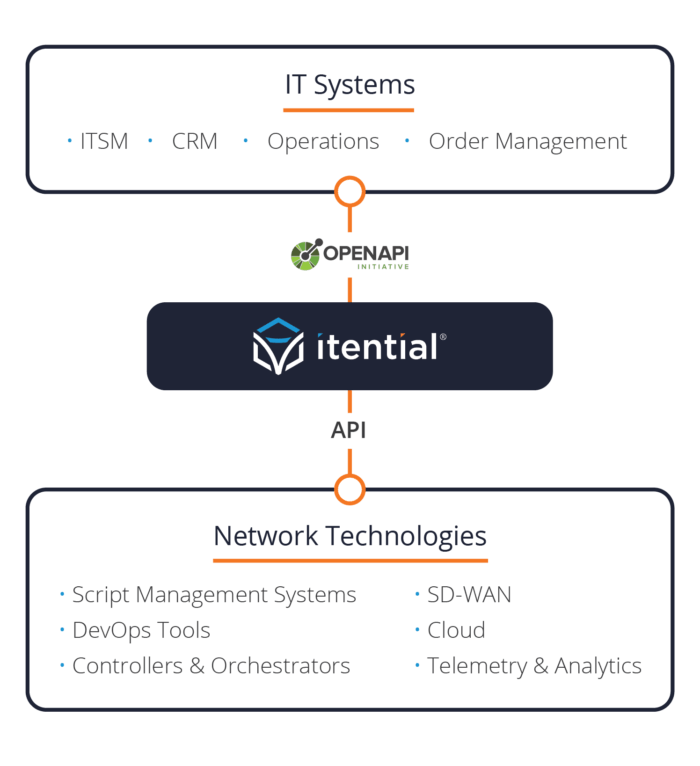Network infrastructure has been changing significantly over the last couple of years due to virtualization and controllers and orchestrators. The reality is, the techniques that people use within each of these domains are germane to what that the network is. So the question is, how do we take services that encompass both on-prem and cloud and traverse different network application domains and stitch them together to provide a network API to end-users without having to start over? It’s time that organizations look at how they tie together automation independent of the domain and the tool that’s being used to solve an automation challenge.
Network automation and network management tooling have historically been very verticalized. A single device on a network would have one system gathering data for topology, another person and a separate system gathering performance data, same for alarming data, etc. and ultimately making network changes in these silos. People that used to live in these segregated disciplines must now interact with one another in order to get applications delivered successfully, including having the networking done well, storage connected correctly, and a security model that can be audited properly.
Automate the End-to-End Process, Not Just the Network Change
Every network environment has a different combination of tools and devices, which is why the thought that there’s going to be a rigid, verticalized application that can solve all challenges independently is farfetched. A realistic approach is to have an ecosystem of those integrations that can be used in your unique environment.
Take the process of turning up a new SD-WAN branch as an example. Automation of just say the Meraki API is one component, shipping the box, pushing the day zero-config, applying policy, sending a notification for somebody in the local store to plug it in. All of these functions are mostly done manually and by other tools that aren’t integrated.
As network infrastructure is modernizing towards programmability, we need to take advantage of that capability and start to leverage this in how we operate. Instead, a network API extends not just to the variety of infrastructure but can also keep track of which devices are involved in automation within each environment to route it to the correct place for execution. End users can rely on the generic network API, and not be concerned with either the implementation-specific details or where that might be located.
Itential –The Network API
Organizations are discussing how we retrain our network engineers as software developers to become more involved with the shift towards programmability. And while this is important, it is an unrealistic approach to getting the most out of automation. We need the largest amount of participation in the greater automation because automation builds on itself. So when we start talking about integrating with systems, we start talking about augmenting with infrastructure as code and how we engage the development community in building this automation. That’s when we see the most benefits.
When Itential is deployed, it becomes the central hub for automation that allows that diverse group to come together. The goal is that you start with your top use cases, pick which interfaces you need to which systems, most of which are already available for download on our Developer Hub and then apply your specific business logic.
Itential’s aggregated network API connects tools within your IT ecosystems like ticketing, change management, inventory and monitoring tools with your network technologies to cover all domains.
At Itential, we believe networks are getting more complex and require network automation capabilities that span multiple and distinct automation domains from traditional physical networks to next generation programmable networks, SD-WANs, cloud networks, and VNF-based infrastructures. Itential enables NetOps teams to leverage existing automation efforts, tools and infrastructure for seamless end-to-end automation across multi-domain and multi-vendor networks.

To learn more about multi-domain network automation with Itential, click here to listen to my discussion with the Packet Pushers Heavy Networking crew in their recent podcast.


